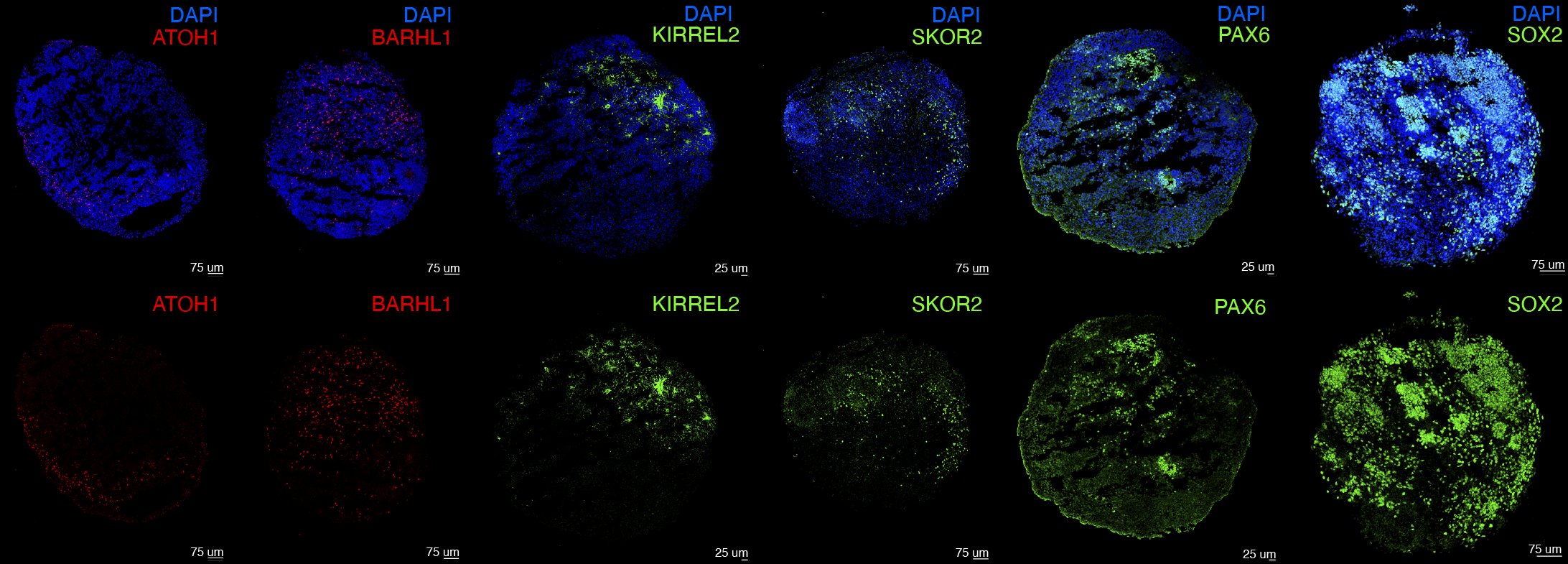our first batch of human cerebellar organoids!
Take a look at our first batch of human cerebellar organoids! 🧠 🧫
This is a collaboration between our lab and Dr. Liliana Attisano's Applied Organoid Core at the University of Toronto. Nice work by Maria Mangos, PhD from the Attisano group and Nishka Kishore from the Pai Lab! Thank you to Alex Atamian and the Giorgia Quadrato group for their guidance on generating these.
What you are seeing is the result of reprogramming human skin cells first into stem cells and then into simple, 3D models of the human cerebellum. The image shows cross-sections of the organoids expressing signature proteins of cerebellar neurons. e.g., SOX2 marks neural stem cells, and KIRREL2 marks Purkinje cells. (This image is now my new desktop wallpaper...).
Most biomedical research is done in mouse models, which do not adequately capture unique aspects of human brain development, disease, or response to treatment. Organoids provide a much-needed human laboratory model for this purpose.
Our plan is to use these cerebellar organoids to understand the genetic and epigenetic underpinnings of medulloblastoma, a malignant childhood hindbrain cancer that is believed to arise during prenatal cerebellum development. We will use genetic and pharmacological methods to confirm the oncogenic effect of candidate cancer drivers, and test strategies to reverse tumour growth.
